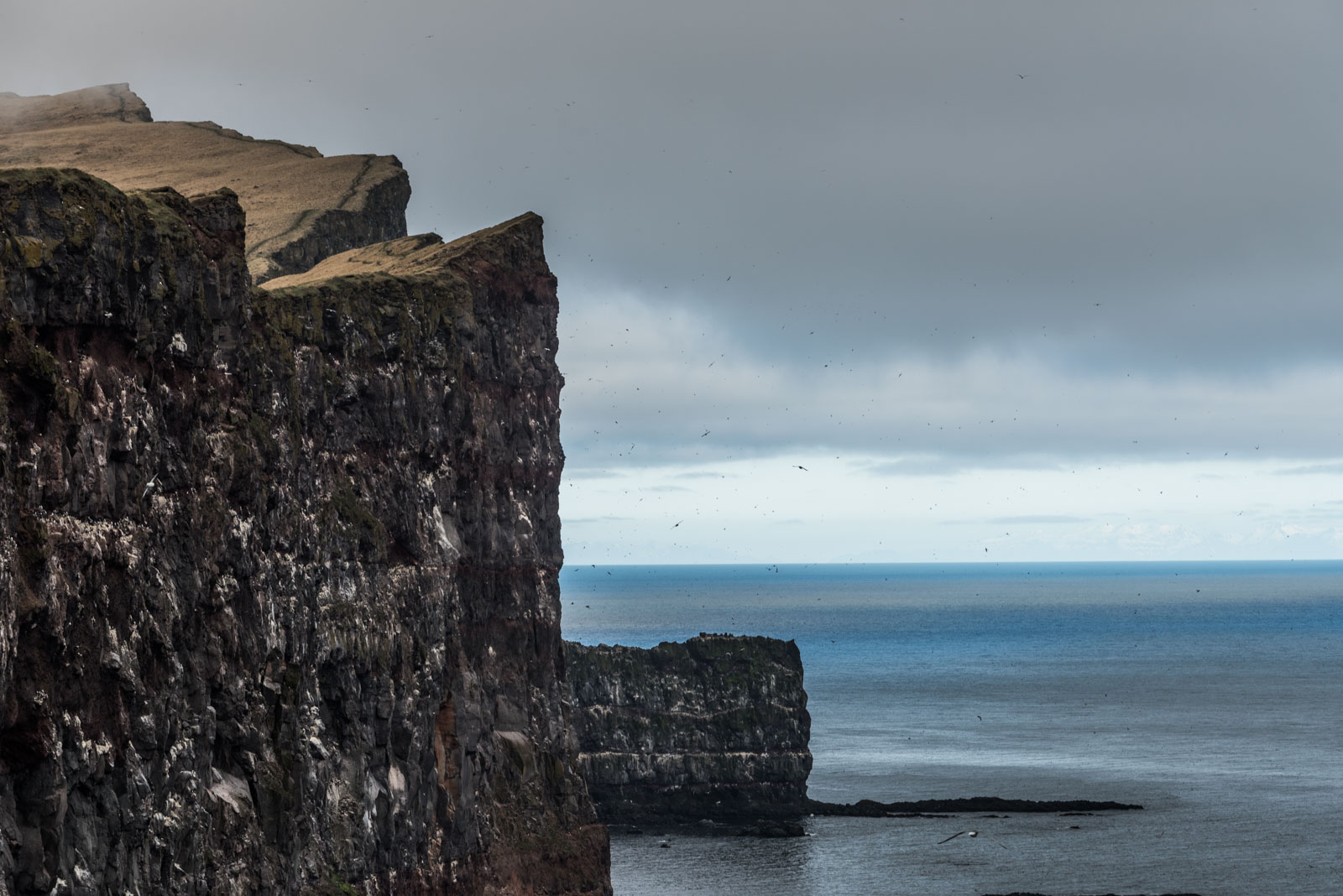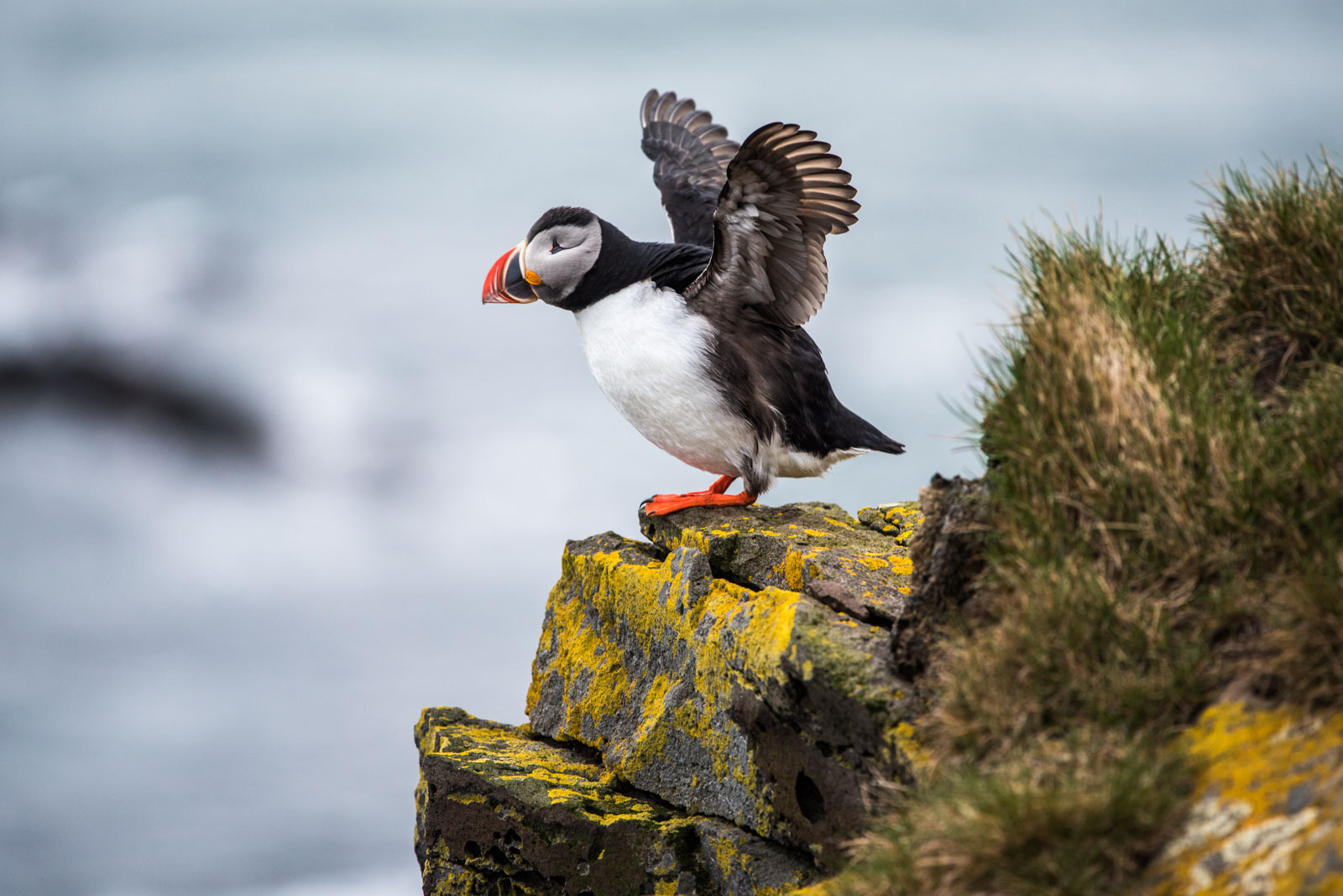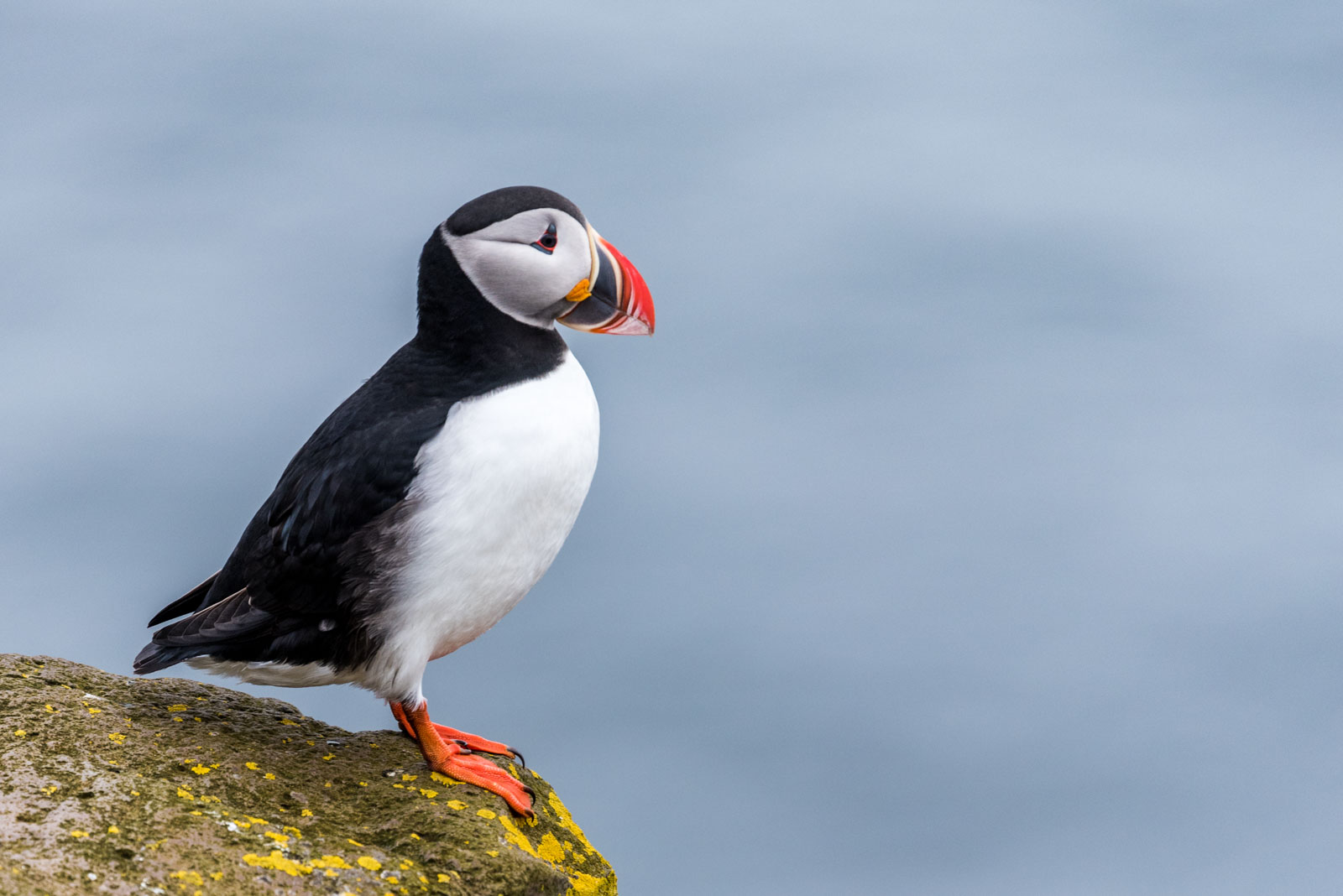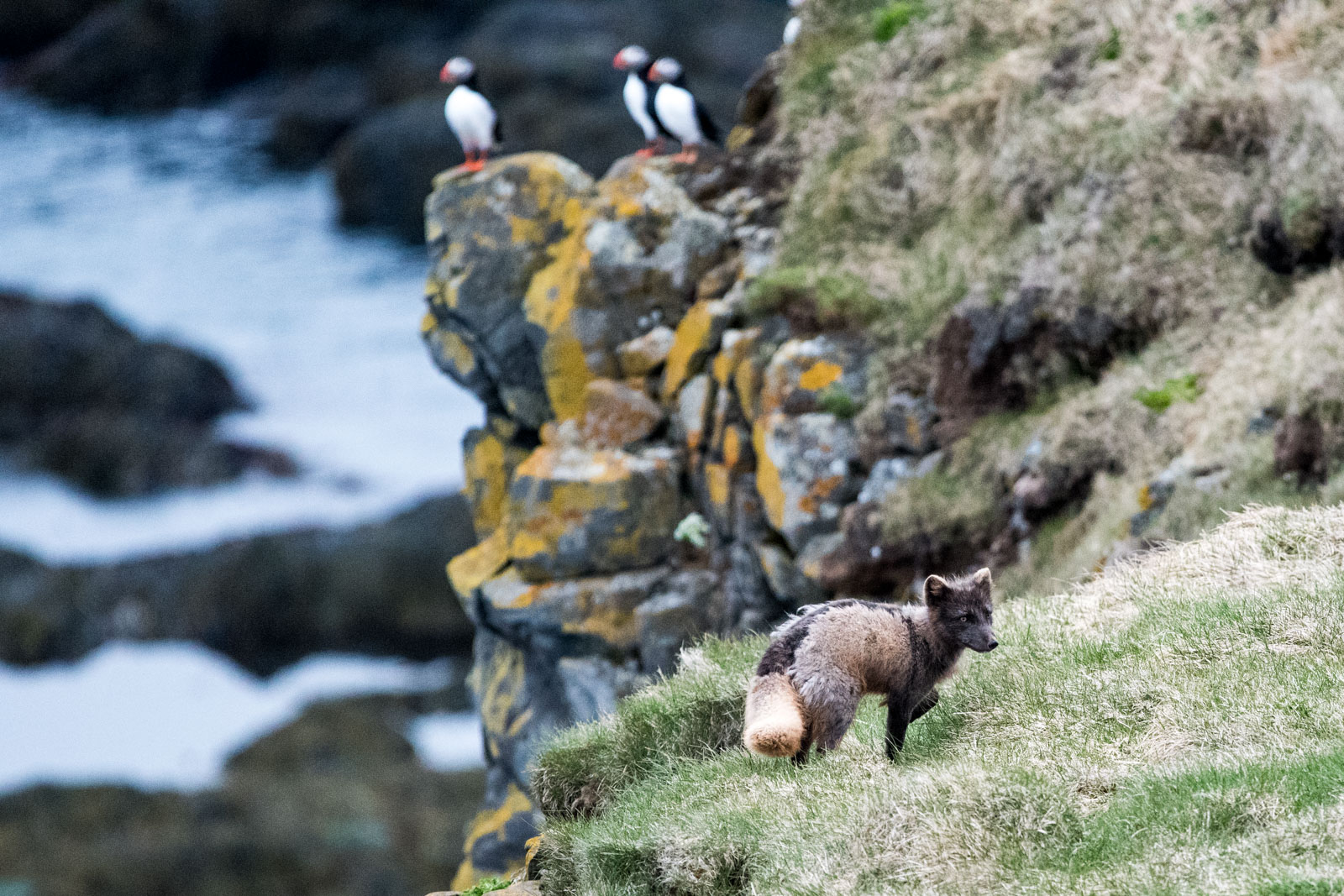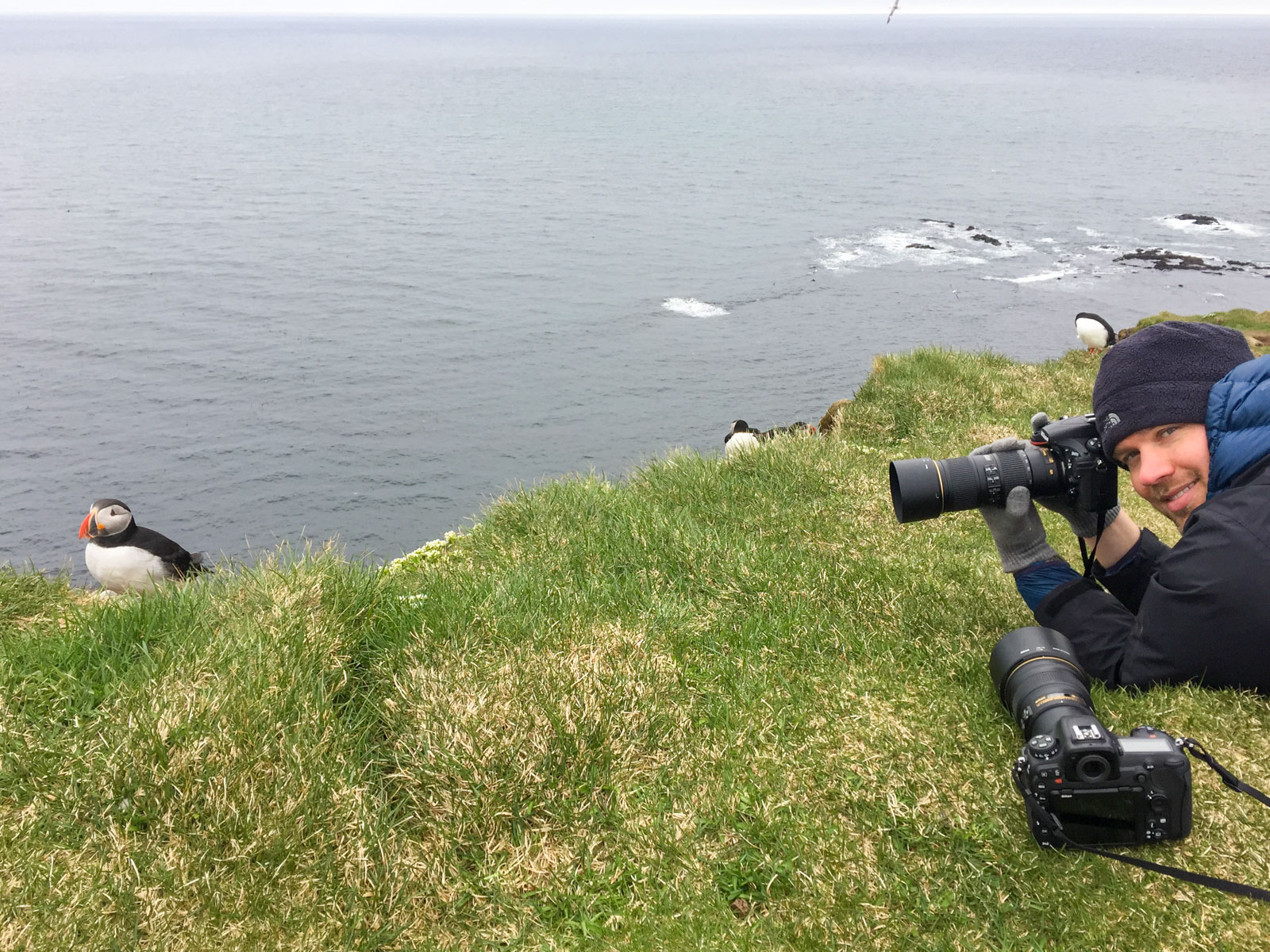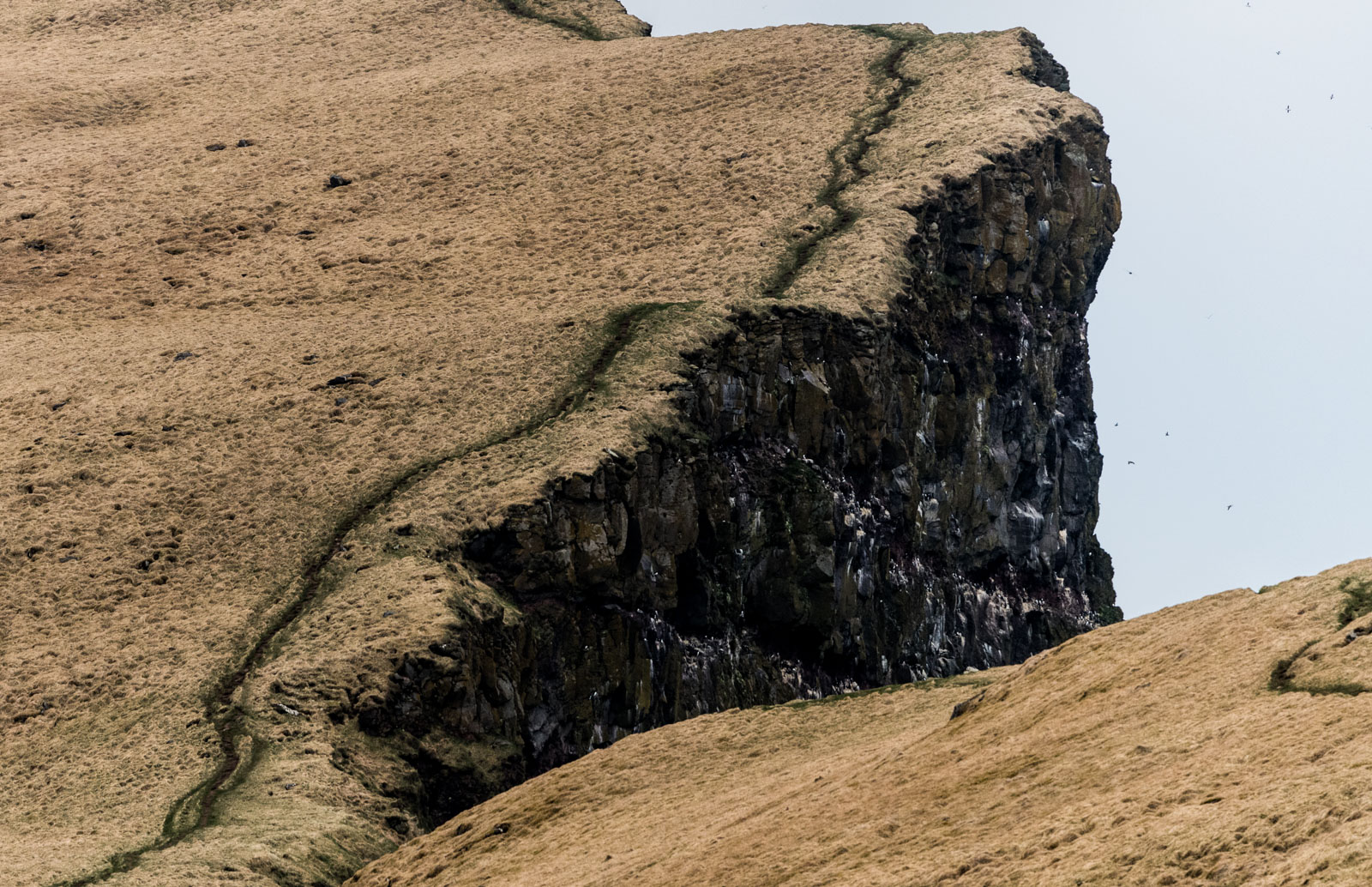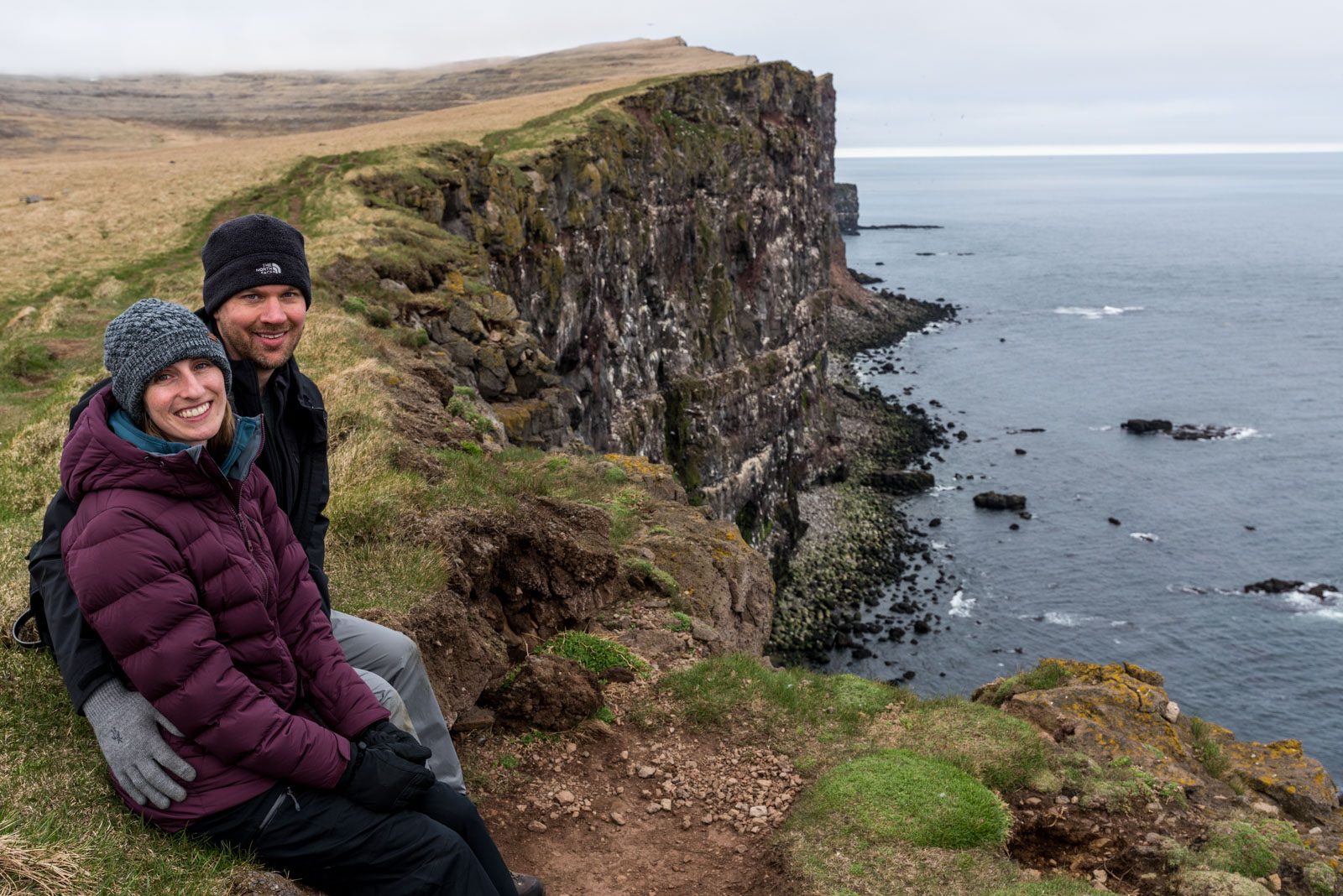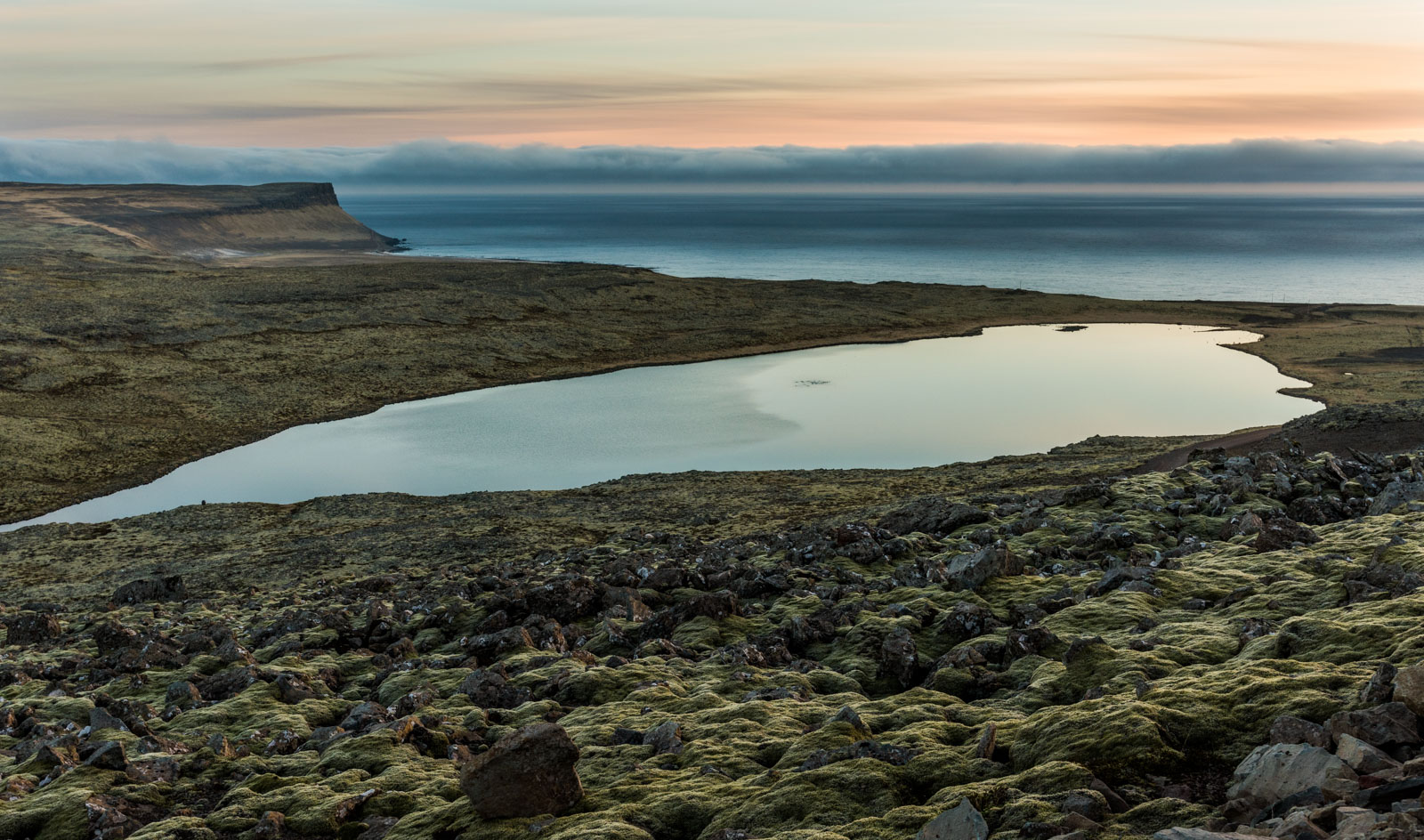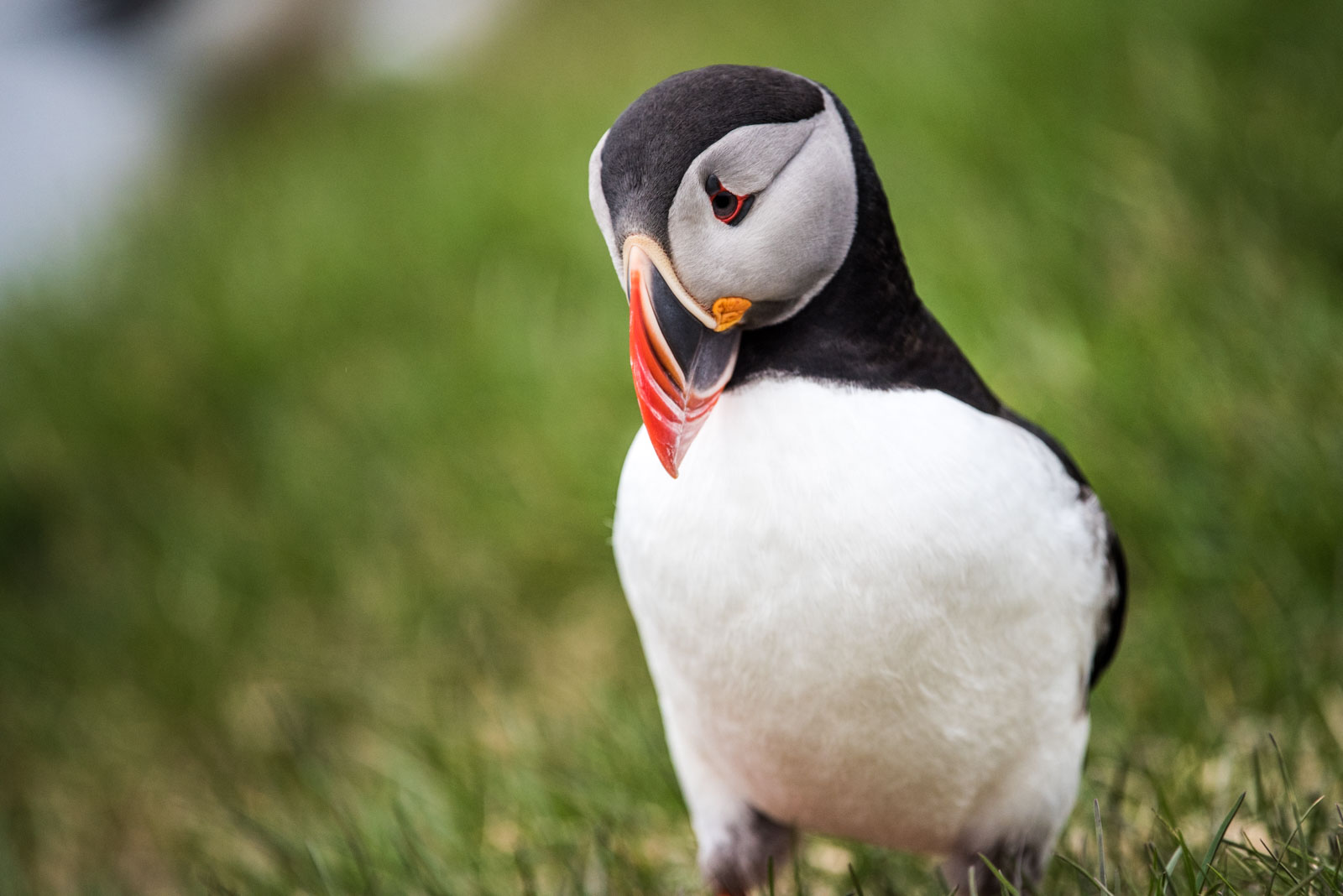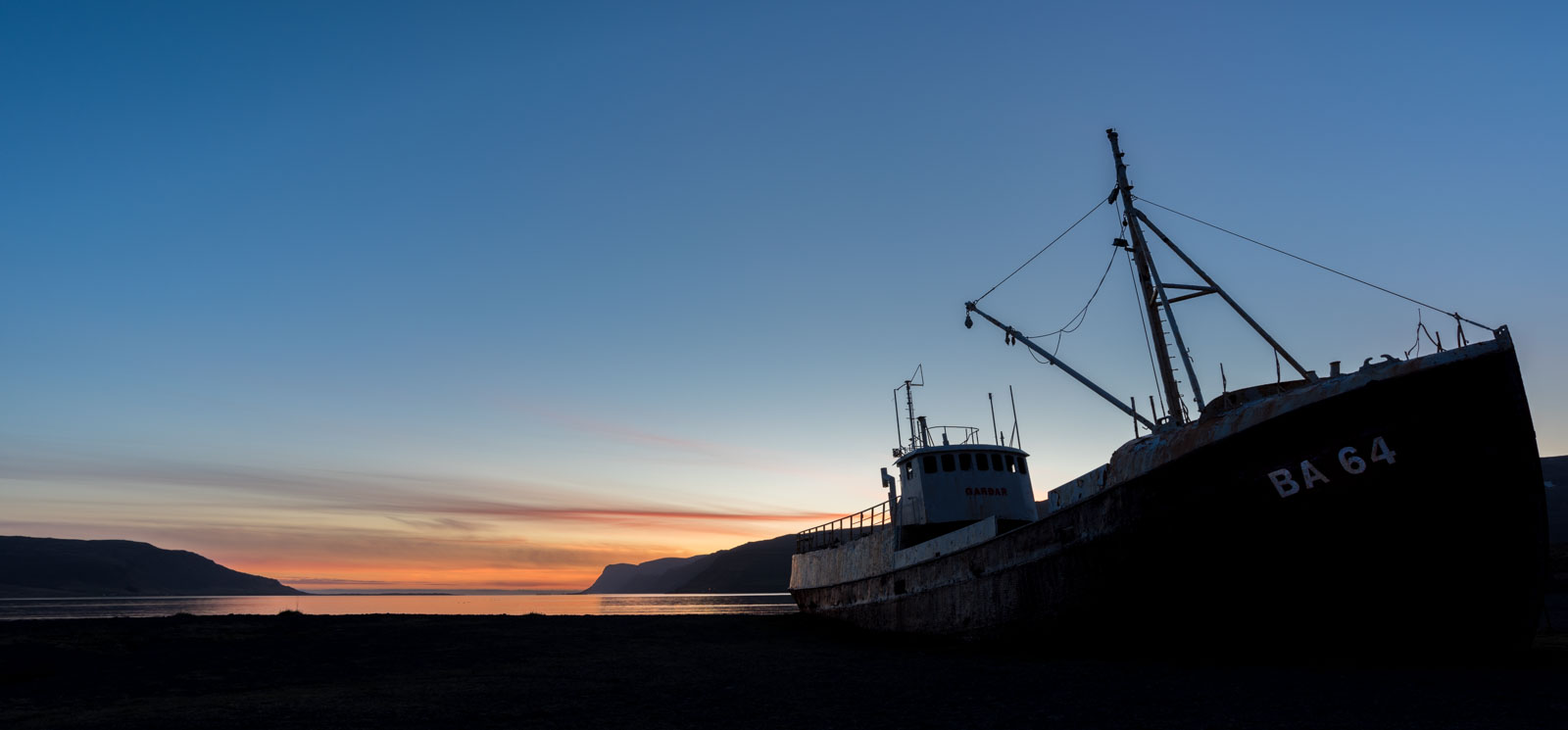Iceland Journal Day 4 (May 19, 2017): Today was all about the Látrabjarg Bird Cliffs, the western most point of Iceland (and of Europe if you exclude the Azores), perched high above the Atlantic. These cliffs are home to several species of sea birds, most notable being the iconic Atlantic puffins. It is a long, somewhat bumpy drive on dirt roads to get out to the cliffs. Once there however, it is as if you are at the edge of the world. The cliffs drop off into the sea, and a cacophony of bird sounds echo off the steep stone walls.
We planned our visit to the cliffs for the evening. The puffins are at sea fishing all day and don’t come back to the cliffs until the evening, so we arrived around 7 pm and were delighted to find they were already flying in and landing clumsily on the grassy berm just above the cliffs. The puffins at Látrabjarg are completely unafraid of humans, so getting close to them is no challenge. However, the fragile bluffs clinging to the rocky cliffs are susceptible to collapse, so we were careful to stay back a bit and spread out our weight as we approached the edges on our bellies.
In addition to the charming little puffins, we were hopeful we might spot an arctic fox along the cliffs as well. Although the arctic fox population is robust in the Westfjords, they are primarily located in the most northern region where they are protected within the Hornstrandir Nature Reserve. At this time of year Hornstrandir is still under snow, so Látrabjarg would be our best chance this trip. Fortunately, about 90 minutes after arriving, a fox came slinking along the bluffs looking for guillemot eggs (another sea bird who call these cliffs home as well).
Although the best viewing of the puffins are right at the Látrabjarg point, near the small parking area, it is possible to hike east along the bluffs a great distance. We hiked for about an hour, marveling at the number of birds we saw along the way. Razorbills, guillemots, auks, puffins… and we even saw our friendly fox again who wasn’t all that worried about us as he was just finishing up eating the contents of an egg he had stolen.
We ended up leaving the bird cliffs well after sunset, but the sun never gets far below the horizon at this time of year in Iceland, so the sky remained a soft pastel of pink for hours. Heading back to Patreksfjörður we were treated to some amazing views.
Although over half of the world’s Atlantic puffins breed in Iceland, their populations have dropped dramatically over the past five years. The puffins rely on the sand eel fish as their primary food source, and climate change is impacting their availability greatly. Additionally, various pollutants, from ocean plastics to pesticides, are contributing to chick mortality for many sea birds. It is our duty to recognize the significance changing climate has on all facets of our global ecosystem as bad news for puffins will ultimately lead to bad news for others as well.
Here is our Day 4 Route (out and back):

